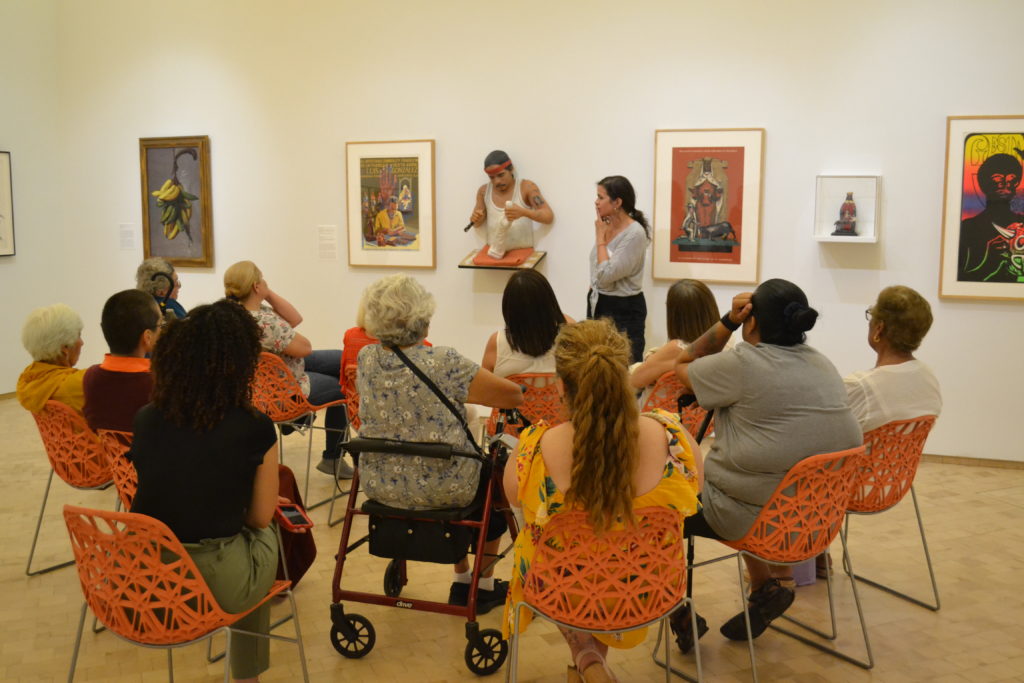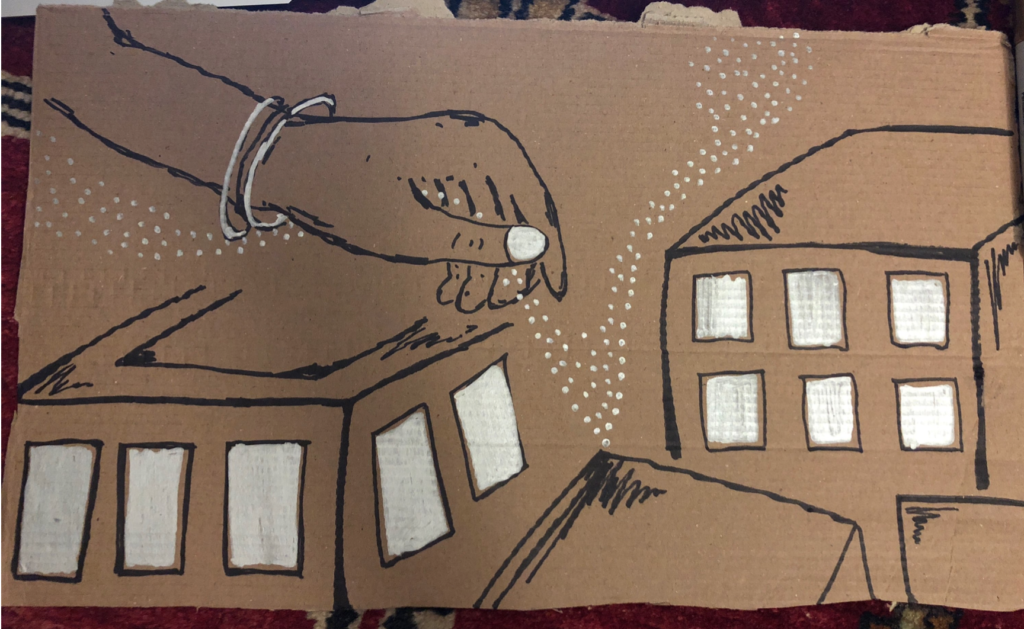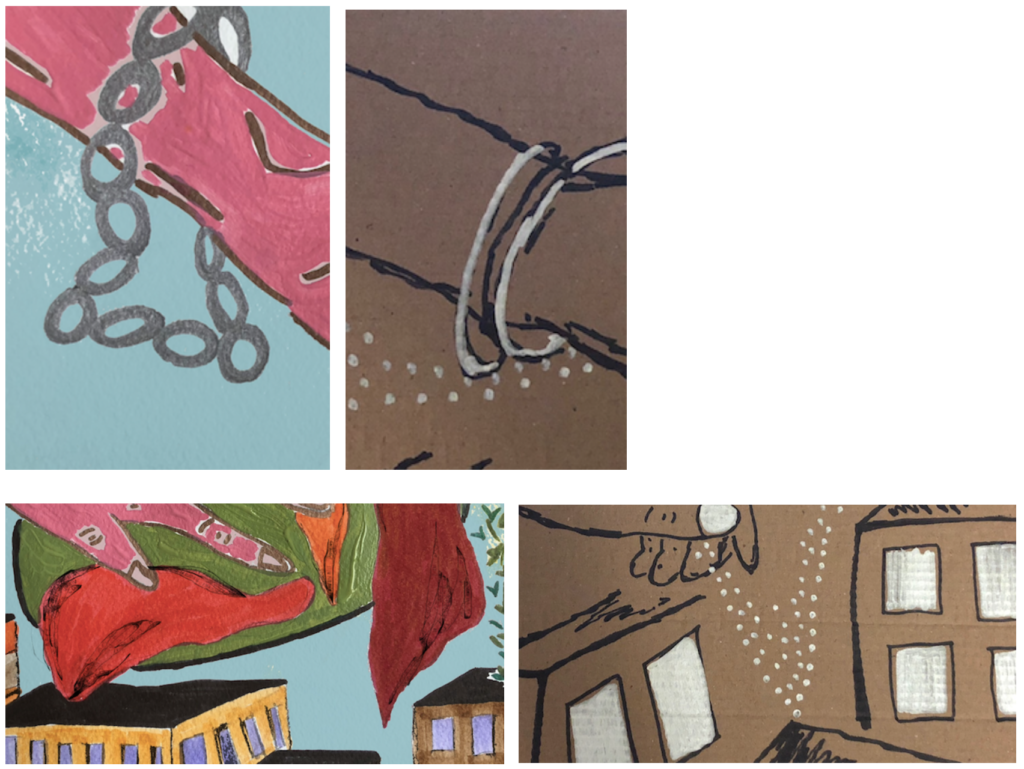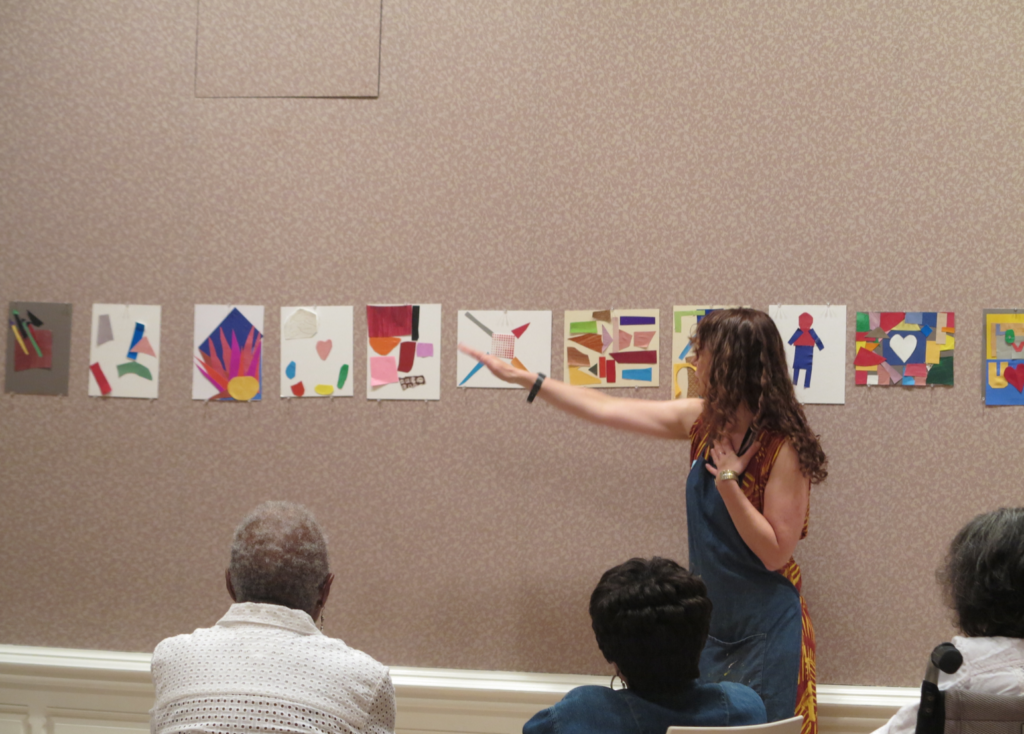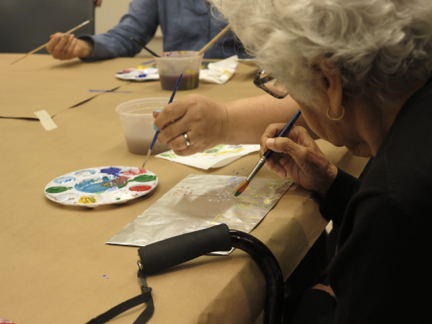In an Arts & Minds program, conversation is one of the leading forces. Conversation is the pathway to unpacking meanings embedded in the artwork. As an intern, I have the chance to sit on the outside and watch the conversations develop right before my eyes. Meaning weaves itself together naturally, revealing the moving relationship between art and shared experience. When attending Arts & Minds programs in Spanish, however, my attention was brought to the underlying importance of the program, which extends beyond the program’s art speculation.
When I attended a program this week that was entirely in Spanish, my usual routine was no longer plausible. I wasn’t able to do much more than smile and say hello as people entered the museum. As we stood in the lobby of El Museo Del Barrio, one of the teaching artists and a mentor of mine, Nellie, whispered to me that they were talking about Virgin Mary. I gasped and smiled, ahhh!, as if this piece of information suddenly tuned me into their conversation. However, this tiny piece of information did, in fact, make me feel more included. I found myself latching onto little clues such as this.
As the program went on, the language barriers became less visible. We went into the exhibition and gathered around a piece of art. I held onto the tones of the participant’s voices, their gestures, the laughter that would break out when that one woman on the left would say something with a skeptical look.
In Makoto Fujimura’s book, “Culture Care”, Fujimura writes about the importance of gathering together in the face of art. And one thing he presses is the importance of everyone, of all abilities, to be nurtured by art. In my previous blog posts, I have recounted Vanier’s influential perspectives of art and inclusivity. Fujimura emphasizes these lessons, teaching them through the message that, “culture care is to provide care for our culture’s “soul”, to bring to our cultural home our bouquet of flowers so that reminders of beauty- both ephemeral and enduring- are present in even the harshest environments…”
Attending Arts & Minds programs have revealed to me how important it is for all citizens to have the chance to gather together and express oneself through art. And through this, connect with the beautiful humans who are also present. Alzheimer’s is a cruel disease. Many people who live with Alzheimer’s Disease experience difficulties following conversations, along with hearing and speaking challenges. This put me in their shoes in a very unexpected way. In programs with patients who have more developed versions of dementia, some of them have a hard time speaking – some don’t speak at all.
Many people are unsure of what to do with people with Alzheimer’s, whether it be out of fear or with the lack of resources. Fujimura emphasizes that as artists, it is our responsibility to implement programs and care for all people’s creativity. Fujimura writes, “we may need to learn to cultivate these reminders of beauty in the same way flowers are cared for and raised. Culture care restores beauty as a seed of invigoration into the ecosystem of culture. Such care is generative: a well-nurtured culture becomes an environment in which people and creativity thrive.”
Afterwards, Nellie, one of the teachers with Arts & Minds (and one of my role models) came up to me. She said, “it’s humbling, isn’t it?” I agreed. It is humbling to sit in a room where everyone’s lives are so different from yours. The Arts & Minds program in Spanish gave me the distance to see more of my own difference, and to be humbled. As I clung to the little clues outside of language, the laughter shared and the moments of quiet, I saw a big group of friends persisting through their shared experience of something seen as hopeless or tragic.
Fujimura writes that, “Culture care is the imaginative effluence of being a faithful follower of Jesus in any time or place. It’s hope to borne into places where hope that is truly hope must be realistic, slow, disruptive, and limited.” We must extend our care to places such as Arts & Minds, where we confront and feel our differences. Through the act of creation, a connection emerged through all of us. Creation is God’s gift to us, and as an artist, it is our spiritual duty to spread creativity to all communities of people.
Under the light of creation and art, our differences glow.

